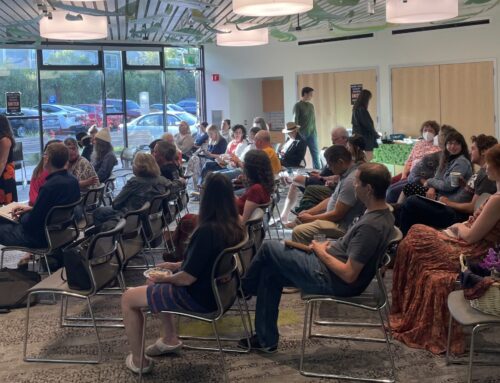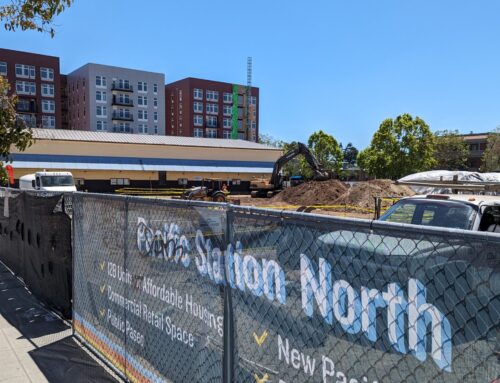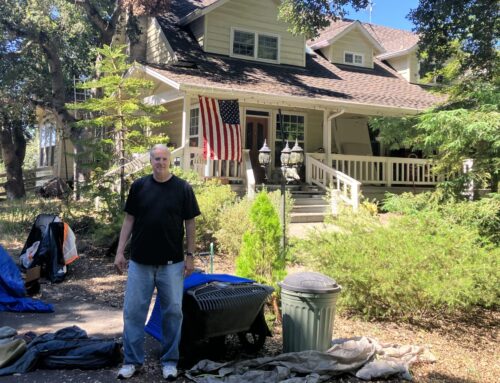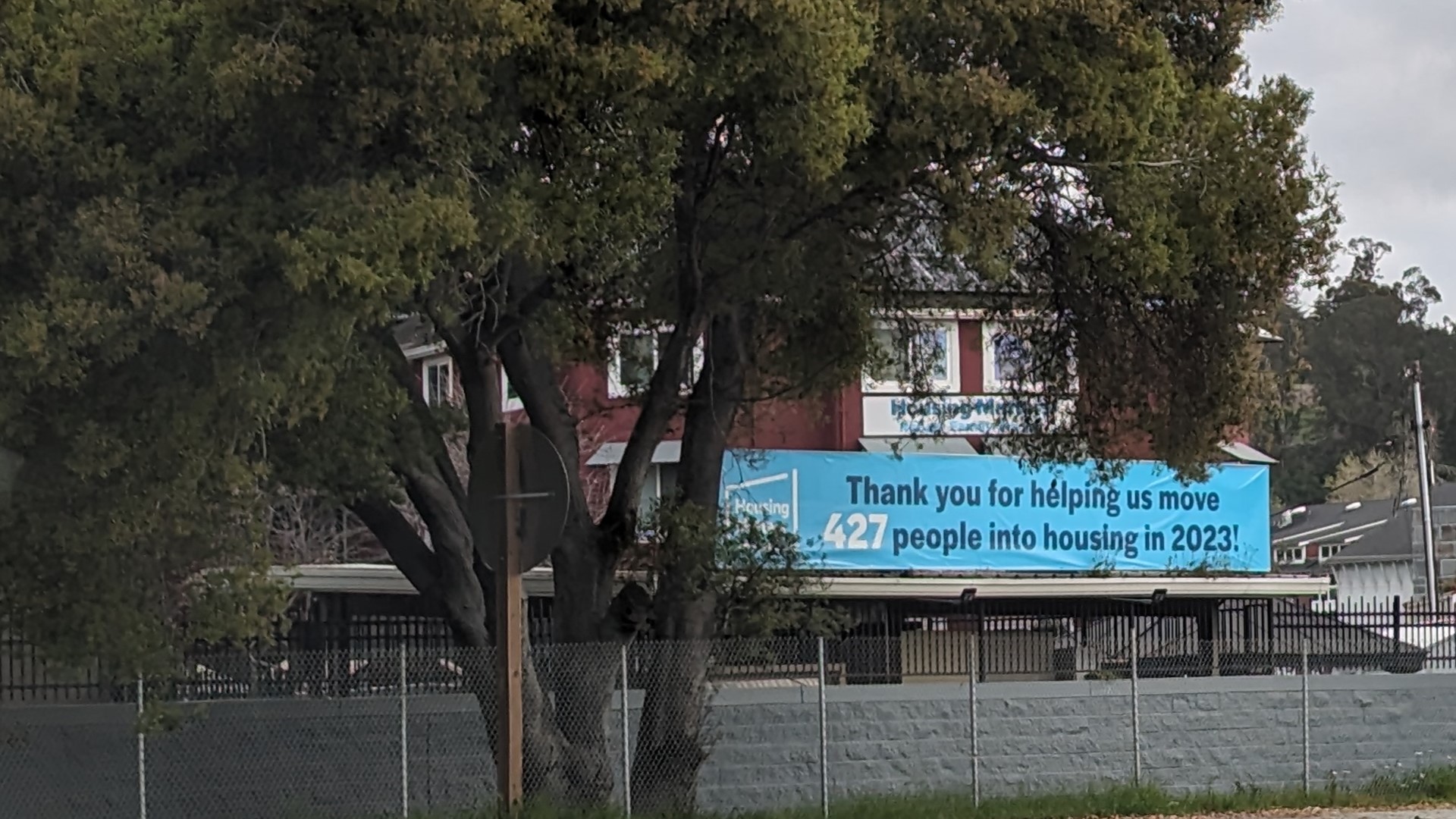
Housing Matters in Santa Cruz said it helped 427 people into homes last year. Other organizations also helped hundreds more find homes. (Stephen Baxter — Santa Cruz Local file)
Why we wrote this story
A Santa Cruz Local story this year prompted a reader to ask: How many unhoused people in Santa Cruz County found permanent homes in recent years?
SANTA CRUZ >> There have been about 1,800 to 2,300 unhoused people in Santa Cruz County in recent years, and at least 1,000 people each year have found housing through city, county and nonprofit programs, according to county records.
The net number of unhoused people has remained fairly constant, but the individuals are often different. Some people find housing and others become homeless each year.
County staff track this measure of progress in addressing homelessness — but it’s not easily found.
Robert Ratner, director of the county’s Housing for Health Division, said housing exits are a key metric, but not the whole picture. A housing exit is when an unhoused person moves into permanent housing, not including a shelter or transitional housing.
“We’ve got to have information to know how well we’re doing on that, and what’s working and not working. Otherwise it’s just not a good use of time, money, and public resources,” Ratner said in an interview with Santa Cruz Local.
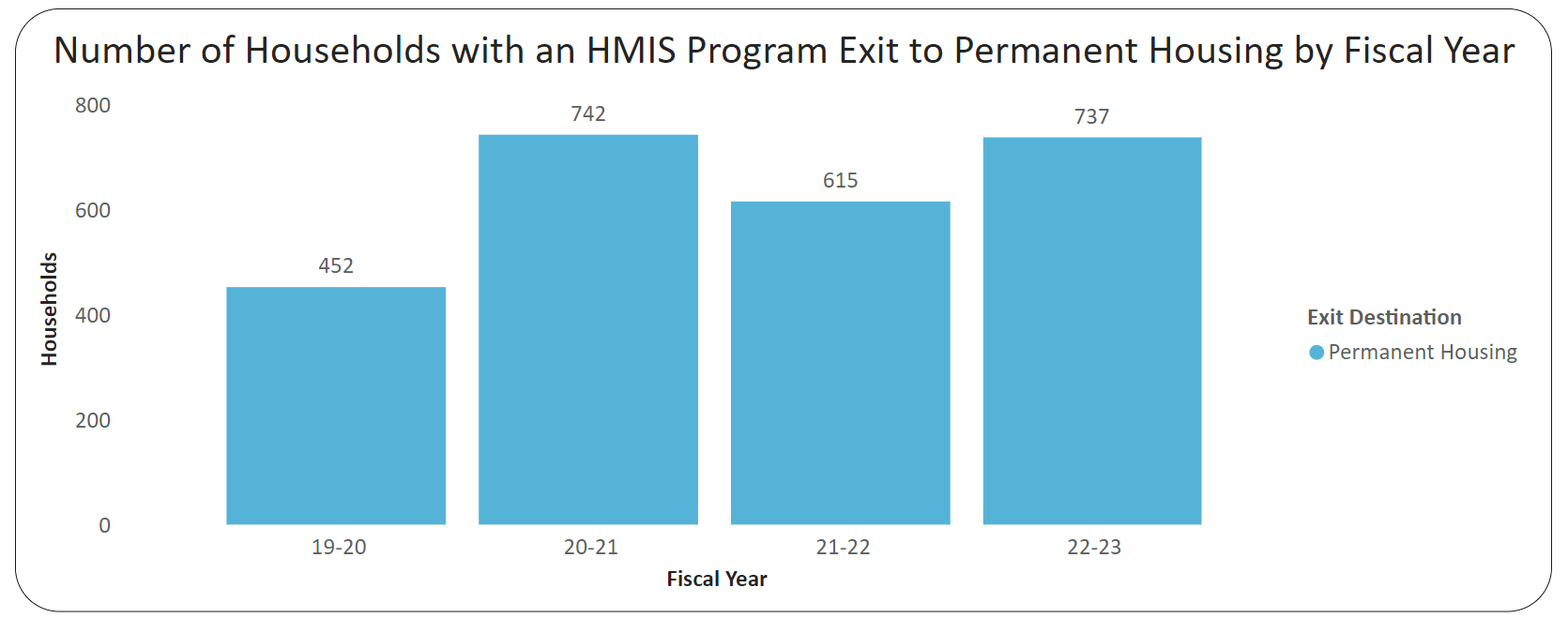
“Housing exits” are measured in households. For example, in Fiscal Year 2019-2020, 808 people from 452 households found housing. (County of Santa Cruz)
To compile how many homeless people found homes, 21 participating agencies participate in the county’s Homeless Management Information System (HMIS).
- 808 people from 452 households found homes in Fiscal Year 2019-2020.
- 1,141 people from 742 households found homes in Fiscal Year 2020-2021.
- 1,053 people from 615 households found homes in Fiscal Year 2021-2022
- 1,301 people from 737 households found homes in Fiscal Year 2022-2023.
There were 21 participating agencies in HMIS as of July 2023:
- Abode Services.
- Association of Faith Communities.
- Bill Wilson Center.
- Cabrillo College.
- City of Santa Cruz.
- Community Action Board of Santa Cruz County.
- Covenant House.
- Downtown Streets Team.
- Encompass Community Services.
- Families In Transition.
- Front Street Housing Inc.
- Housing Authority of the County of Santa Cruz.
- Housing Matters.
- Nation’s Finest.
- Pajaro Valley Shelter Services.
- Salvation Army.
- Santa Cruz County Health Services Agency.
- Santa Cruz County Human Services Department.
- Siena House.
- US Department of Veterans Affair.
- Wings Homeless Advocacy.
Housing Authority vouchers
These HMIS figures include vouchers that subsidize rent provided by the Housing Authority of the County of Santa Cruz. Because unhoused people are often in several programs, county HMIS reports systematically prevent double counting of people who found homes.
Housing Authority vouchers helped 345 unhoused people find homes in Fiscal Year 2022-2023, wrote Tom Graham, the Housing Authority’s deputy executive director. The vouchers helped an average of about 250 unhoused people find homes each year from 2019 to 2023.
People typically wait years to get a voucher, then often have trouble finding landlords to accept vouchers.
There are 5,519 households receiving rental assistance with a voucher in Santa Cruz County, said Graham. About 20% of these, or 1,135 voucher holders, were homeless when they received the voucher.
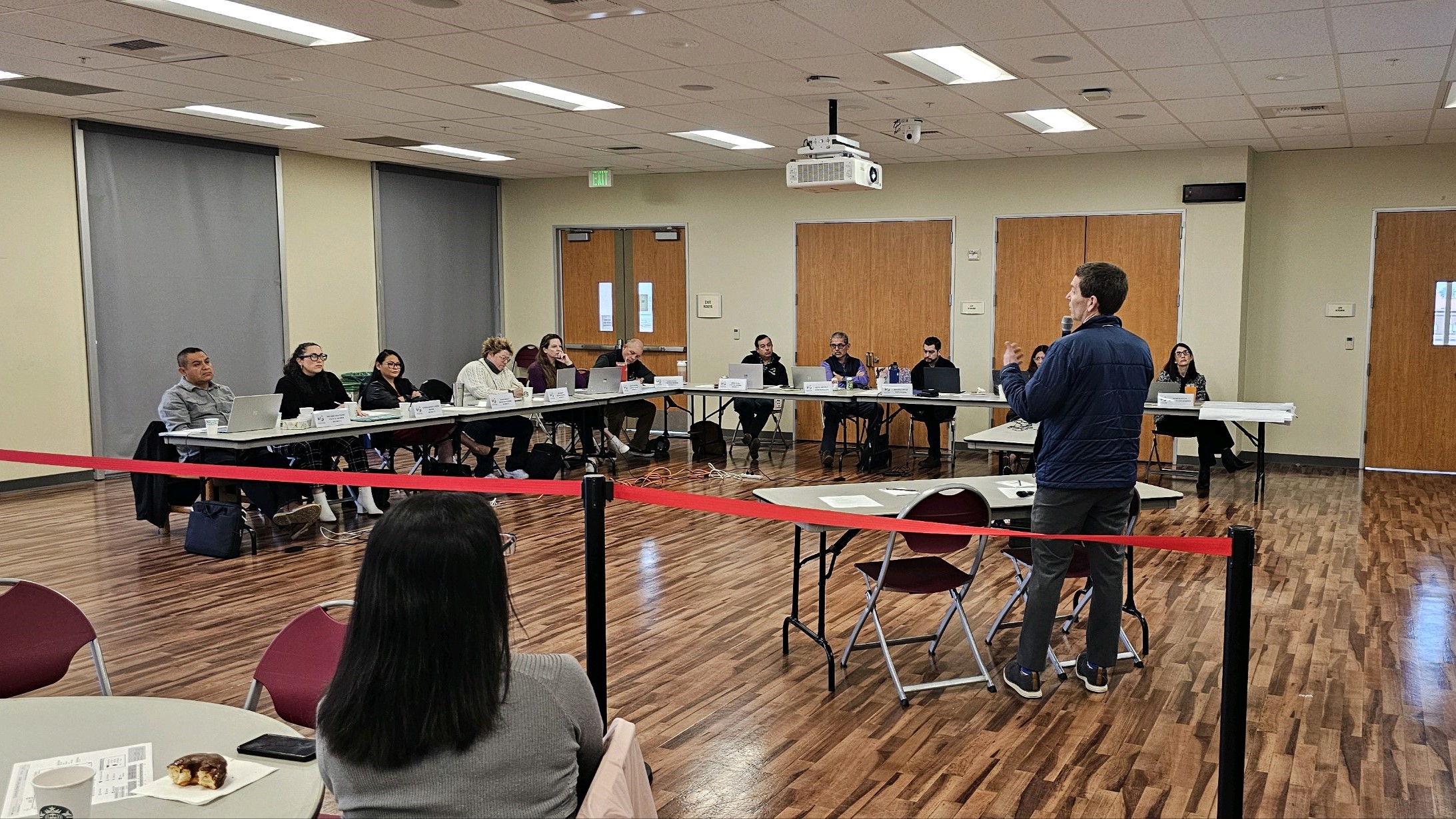
Robert Ratner, director of the county’s Housing for Health Division, speaks to the Watsonville City Council during a March study session on homelessness. (Fidel M. Soto — Santa Cruz Local file)
Ratner said that putting a person in an apartment does not necessarily make them housed forever. There are often other problems that contributed to their homelessness that can include disabilities, mental health problems, addiction and troubled relationships.
Allowing people to seek housing as a chosen group can be more cost efficient and avoid social isolation.
“Our housing efforts are really focused on helping people be with the people they want to be when they move in,” said Ratner.
Additionally, applying for housing as a household can facilitate two or three people at a time moving into a housing unit, instead of only one. However, households with histories of domestic abuse, for instance, would likely prompt separate housing.
“If one person moves into a one-bedroom versus two or three, we’re actually helping more people get off the streets,” Ratner said.
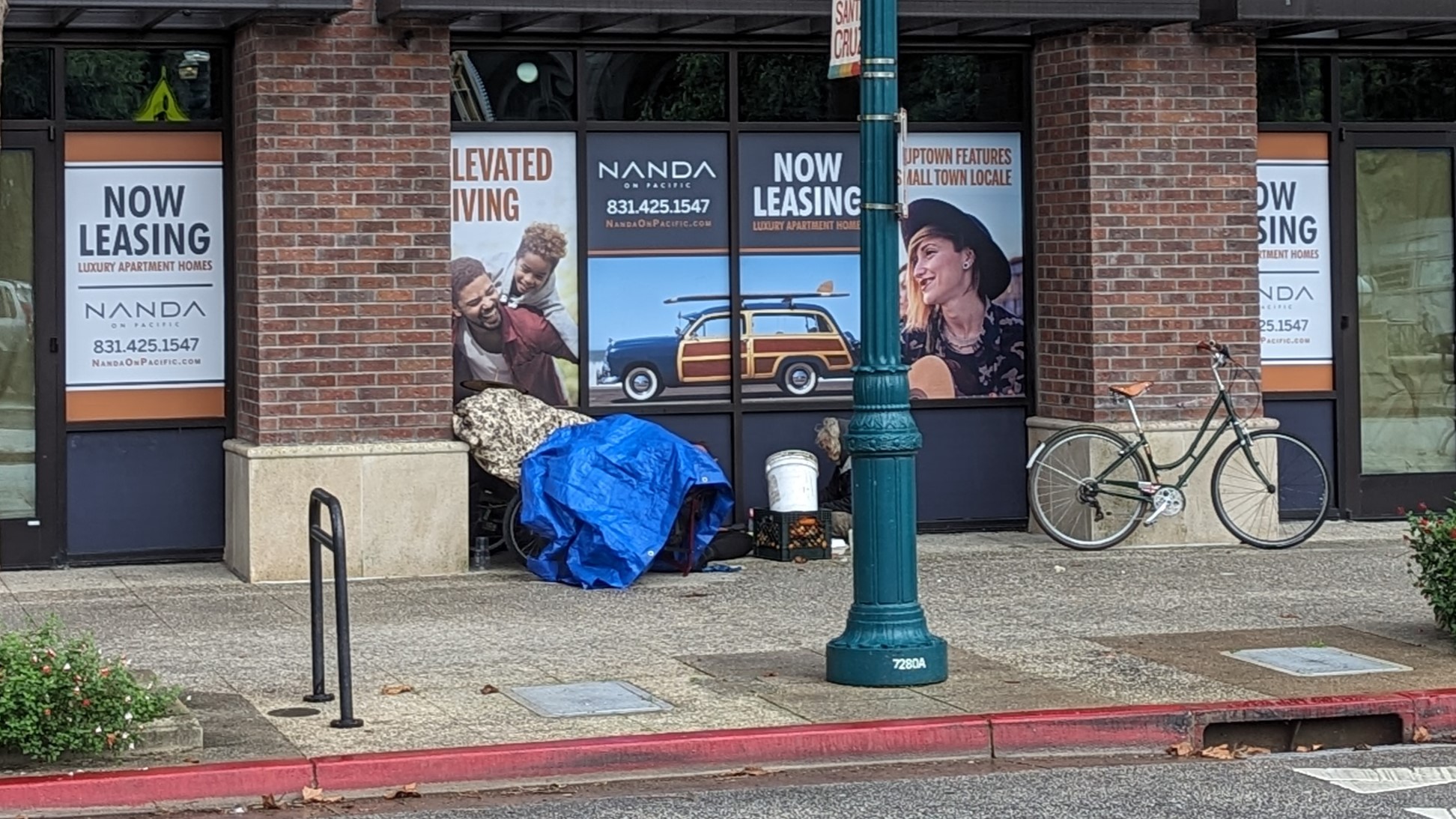
A person takes shelter near an advertisement for market-rate apartments on Pacific Avenue in Santa Cruz in January. (Stephen Baxter — Santa Cruz Local)
Read more
- Author discusses relationships, money to address homelessness — June 7, 2024
- State report on homelessness calls for more accountability — May 2, 2024
- Affordable housing waitlist opens in Santa Cruz, with more on tap — April 22, 2024
- Progress highlighted on homeless services in Santa Cruz — Feb. 29, 2024
- Report finds fewer homeless residents in Santa Cruz County — Aug. 4, 2023
Questions or comments? Email [email protected]. Santa Cruz Local is supported by members, major donors, sponsors and grants for the general support of our newsroom. Our news judgments are made independently and not on the basis of donor support. Learn more about Santa Cruz Local and how we are funded.
Tyler Maldonado holds a degree in English from the University of California, Berkeley. He writes about housing, homelessness and the environment. He lives in Santa Cruz County.
Stephen Baxter is a co-founder and editor of Santa Cruz Local. He covers Santa Cruz County government.



